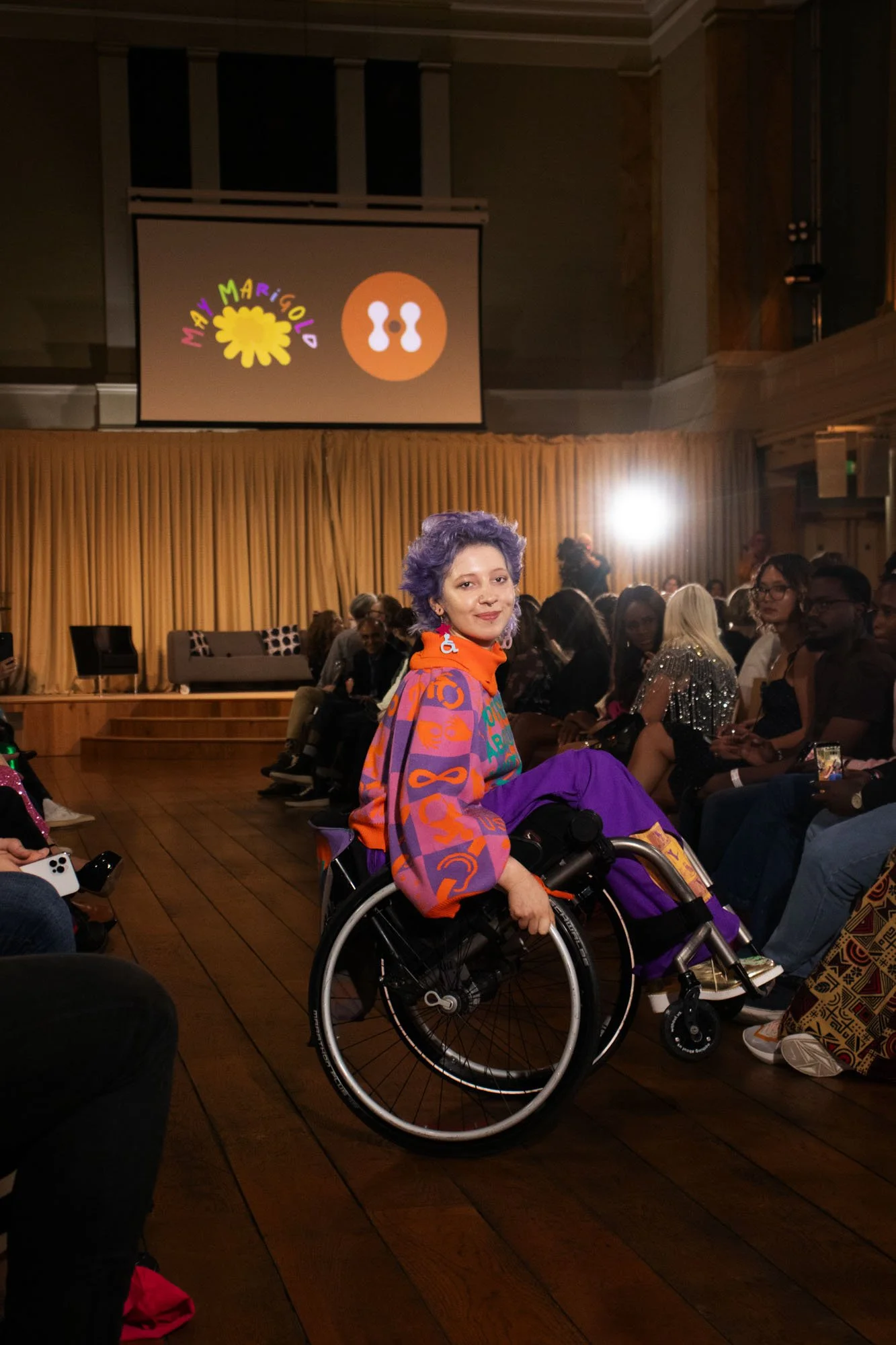MAY MARIGOLD: PUTTING JOY BACK INTO ADAPTABLE FASHION
By: Hillary LeBlanc
Fashion can feel daunting or less of a priority for anyone living with a disability or chronic illness. When the world is designed mostly for healthy able-bodied individuals, worrying about accessible spaces, changes to life and experiencing barriers become a daily challenge, making personal style an afterthought. While the fashion world has seen some inclusion of adaptable clothing, it is typically generically made and not tailored to specific requirements or needs. UK-based designer May Gauntlett felt she could enhance this area of the fashion industry that needed more resolve.
Gauntlett founded May Marigold, a brand making vibrant, fun, adaptable clothing for people with various disabilities. The brand is set up as a Community Interest Company, meaning all funds made get reinvested back into the community. Gauntlett herself is living with a disability and uses crutches to get around due to joint challenges. She has just graduated Norwich University of the Arts in July 2025 and during her studies did a fashion internship. She knew she wanted to do something impactful within the industry and pivoted to explore adaptable fashion.
Credit: Adam Billings
Gauntlett was also concerned about the price point of adaptable fashion. Since adaptable pieces aren’t necessarily mass produced, the prices of production are generally high. She decided to experiment with second hand clothing transitioning them into functional and stylish adaptable pieces. This approach severely reduced cost.
An important element of the May Marigold brand is working with clients on a one-to-one co-designing process. Every customer has an opportunity to provide input on the designs and customize the adaptability they need, which allows Gauntlett to keep prices down.
May Marigold had the pleasure of being part of London Fashion Week alongside other adaptive brands. She created 11 looks, 6 co-designed with the models. The models selected were real examples of people living with cerebral palsy, chronic illnesses and mobility challenges. Everyone involved with the show including the volunteers and photographers were also people who identified as someone living with a chronic illness or disability. “Fashion is such a powerful tool and it's almost a form of makeup to make yourself up to be what you wanna be,” Gauntlett shares. She emphasized the importance of having fun fashion for special moments in life where people with disabilities want to dress up like everyone else is impoprtant. “Everyone wants to be able to dress up for drinks with friends or have a suit for a job interview and not be forced to be in joggers or hoodies.”
For London Fashion Week this year (2025), Gauntlett made most of her garments personally despite her own disability, which limits dexterity. However she did give a nod to her partner who occasionally helped with some cutting. Her process, including the co-designing, aims to problem solve. She asks her clients or models what their needs are, what they want to wear (that they are unable to wear) and how May Marigold can best represent the individual to feel seen in the garments.
Credit: Adam Billings
For the next few years, May Marigold aims to conduct extensive research to find better ways to sell some items in a ready-to-wear capacity. She wants to specifically research adaptability placement and different disabilities by talking to as many people as possible by creating a community space around the brand. “The plan is to keep going, keep reaching out and keep interacting with the community.”
Gauntlett is currently tasked with finding funding, applying for grants and has received some outreach after London Fashion Week. Current commission based work is open and Gauntlett hopes that the designs she createds will be cherished for years.
For Gauntlett, the community is the most important part. Her favourite feedback so far has been “as we look at your work, it makes me smile”. The aim is to “create bright and creative adaptive fashion, which is fun, flexible and inclusive. A lot of the main source of our inspiration is disabled joy.”


